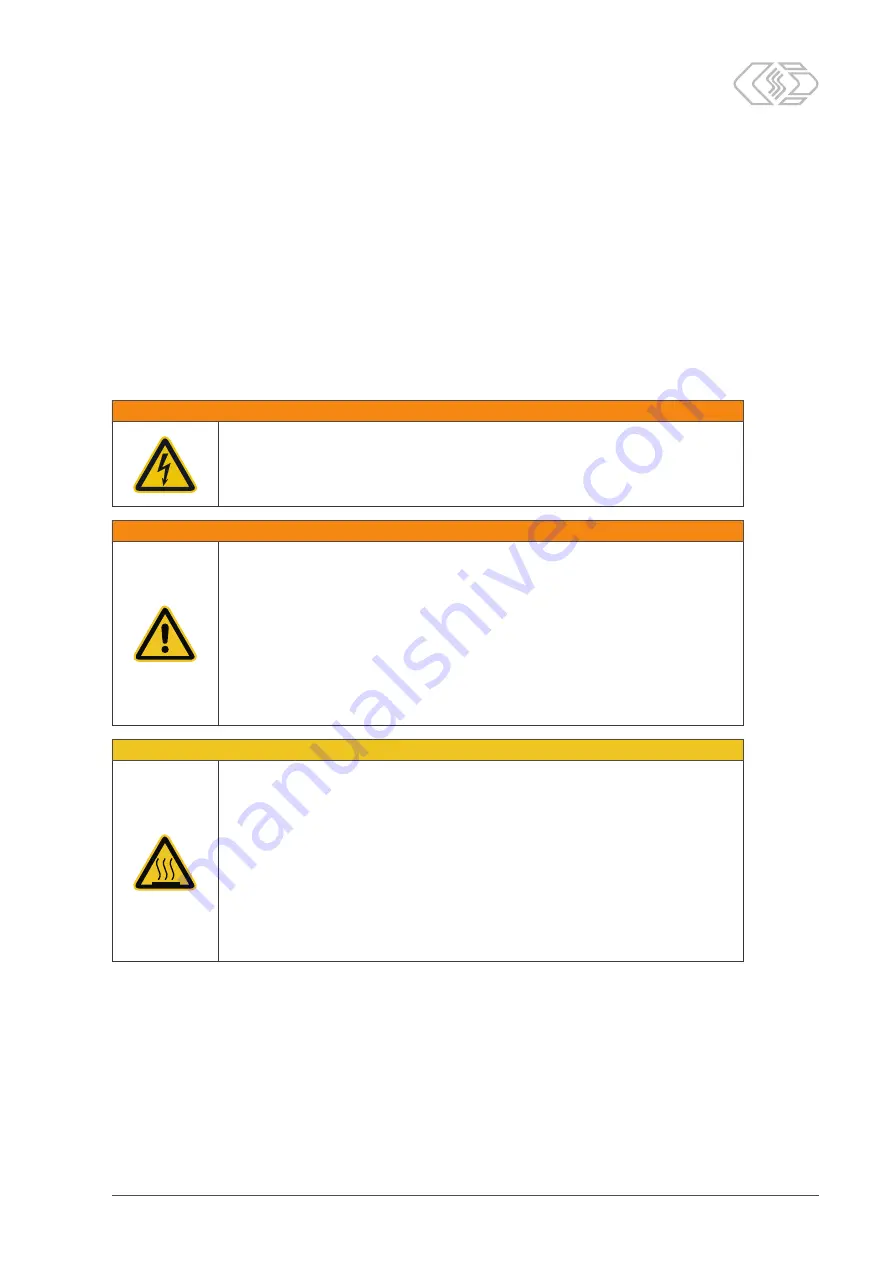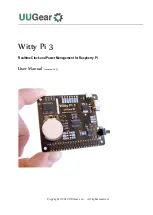
HV Breakout Module – Mounting and installation
Installation Manual
15
Version 01.20 // 2021
4.3.3 Connecting the HV power cables
f
Most of the figures in this section display the mounting of HV power cables to an
HV BM 1.2
using ring terminals. The removal of the cables is done in reverse order.
f
The connecting procedure for
HV BM 1.1
and
HV BM 1.2
devices is almost identical, except
for the detail. HV BM 1.1, hardware revision A, is equipped with a green inner cover which
has to be removed or reinserted in an additional step. As of hardware revision E, this green
inner cover is integrated in the orange housing cover, which means that the additional step
is no longer required.
f
As for the
HV BM 3.1
, the HV power cables are connected by means of Phoenix terminals.
→ Please see chapter 7.1 "Cable preparation" for further information on the assembly of
HV power cables.
WARNING!
The improper opening of the housing during operation entails the risk of
life-threatening electrical shocks.
"
Make sure that the HV power cables have been disconnected before
opening the cover.
WARNING!
When using
HV power cables
made of aluminum
and ring terminals made
of an electrochemically nobler metal (copper), the contact resistance
between the two components increases.
This can lead to a massive increase in temperature and in the worst case
to the development of fire.
"
If ring terminals made of copper are used for connecting HV Breakout
Modules, make sure that only HV power cables made of copper are used.
HV power cables made of aluminum
require a specific connection technique.
Please contact our technical support for further information.
CAUTION!
The measurement module heats up considerably if it is operated in a cor-
responding working environment (e.g. engine compartment). The shunt also
heats up considerably during operation under high load. The surface and the
inside of the measurement module can therefore become extremely hot.
"
Let the measurement module cool down before touching and removing
the cover.
"
Always monitor the shunt temperature and the internal temperature
of the measurement module in order to make sure at any time that
they do not overheat.
















































